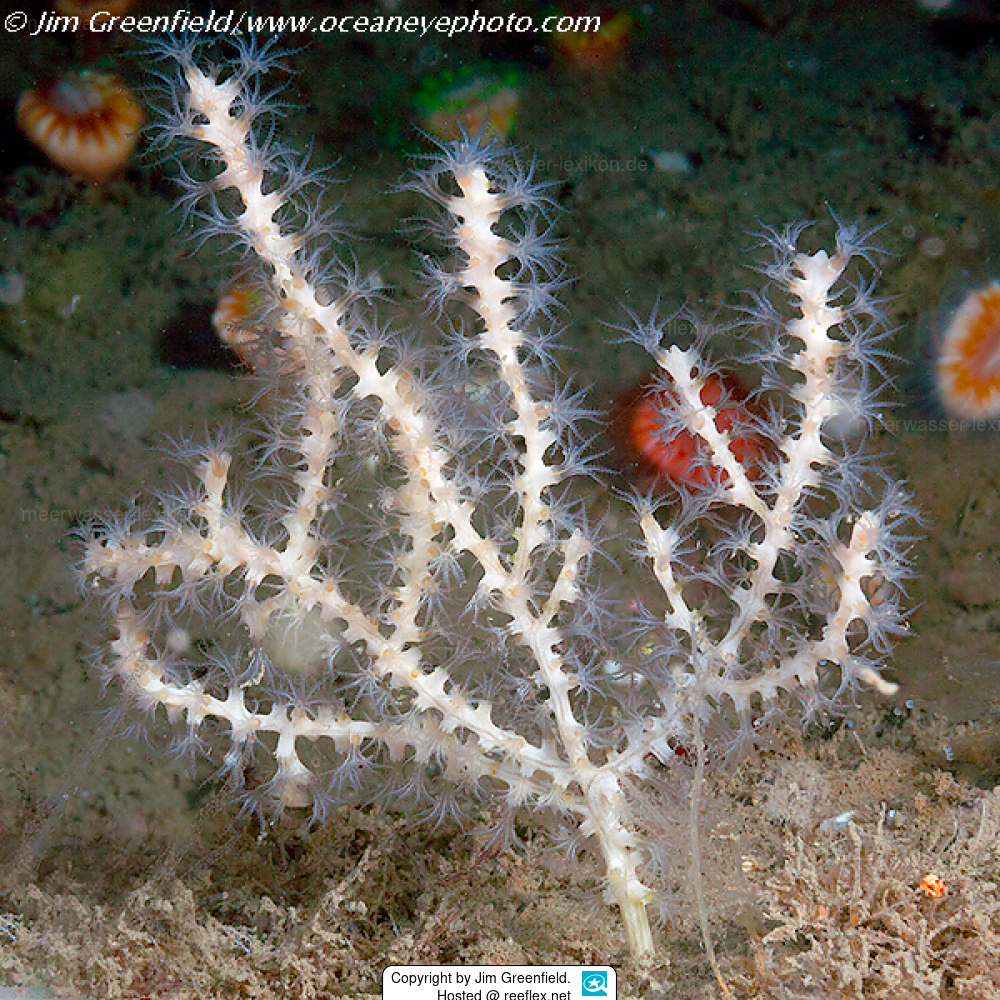Info
Madsen, 1970
Description
Main stem with a narrow basal attachment, usually with a few secondary or tertiary branches but these are not invariably present. Height of colony up to 200 mm but 70-80 mm is more usual. Polyps variably arranged: typically alternating on opposite sides of the axis with occasional ones at right angles to this plane, sometimes more densely and less regularly distributed. Polyps with eight distinct points of long spindle-shaped sclerites on the distal part of the column, running on to the tentacle bases. Spindles from inner layer of rind up to 0.4 mm long.
Colouration: British specimens are usually whitish or pale grey, with a light brown axis; red and pink forms are reported from the Mediterranean.
Habitat
On rocks and boulders from depths of 18-60 m.
Distribution
This species, which is undoubtedly the Gorgonia pinnata of Johnston (1847), has recently been rediscovered in several localities off the west coast of Scotland. It is also recorded from the Bay of Biscay and the Mediterranean where it occurs down to 600 m.
Textsource:
Marine Species Identification Portal!
Host of the copepods:
Doridicola agilis Leydig, 1853
Pseudanthessius thorellii (Brady & Robertson D., 1875).
Classification:
Animalia, Cnidaria, Anthozoa, Octocorallia, Gorgonacea, Holaxonia, Plexauridae, Stenogorgiinae
Description
Main stem with a narrow basal attachment, usually with a few secondary or tertiary branches but these are not invariably present. Height of colony up to 200 mm but 70-80 mm is more usual. Polyps variably arranged: typically alternating on opposite sides of the axis with occasional ones at right angles to this plane, sometimes more densely and less regularly distributed. Polyps with eight distinct points of long spindle-shaped sclerites on the distal part of the column, running on to the tentacle bases. Spindles from inner layer of rind up to 0.4 mm long.
Colouration: British specimens are usually whitish or pale grey, with a light brown axis; red and pink forms are reported from the Mediterranean.
Habitat
On rocks and boulders from depths of 18-60 m.
Distribution
This species, which is undoubtedly the Gorgonia pinnata of Johnston (1847), has recently been rediscovered in several localities off the west coast of Scotland. It is also recorded from the Bay of Biscay and the Mediterranean where it occurs down to 600 m.
Textsource:
Marine Species Identification Portal!
Host of the copepods:
Doridicola agilis Leydig, 1853
Pseudanthessius thorellii (Brady & Robertson D., 1875).
Classification:
Animalia, Cnidaria, Anthozoa, Octocorallia, Gorgonacea, Holaxonia, Plexauridae, Stenogorgiinae







 Jim Greenfield, Großbritannien
Jim Greenfield, Großbritannien






